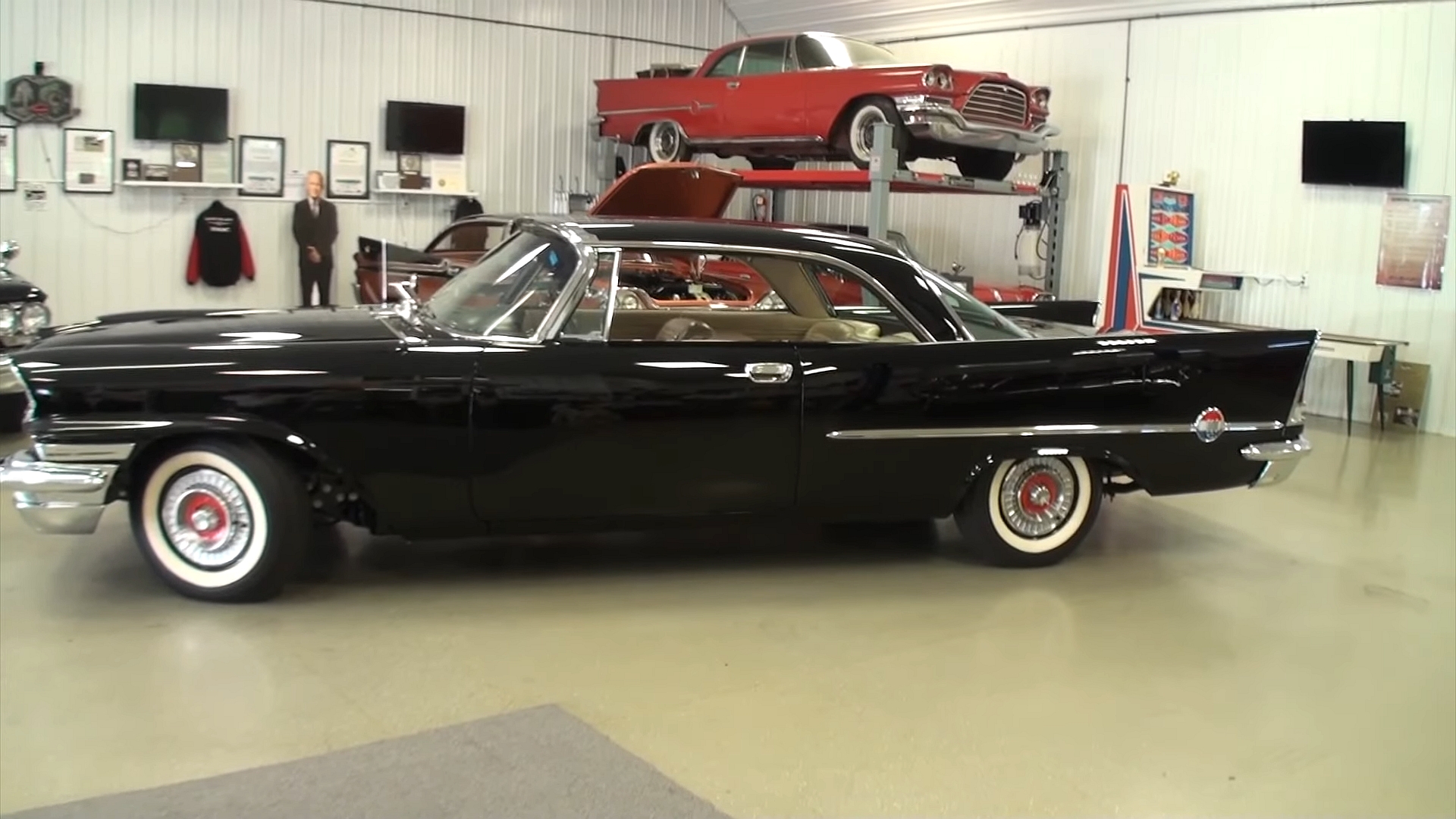Some say the muscle car era began with the Pontiac GTO in 1963. Others claim that it all started with the Chrysler C-300, a luxury coupe that came with a whopping 300 horsepower on tap in 1955.
But whether the C-300 is acknowledged as an early muscle or not doesn’t matter. The coupe developed into a full series and spawned a long list of luxurious and powerful rigs through 1965. Production figures rarely exceeded 2,000 cars per year, so each 300 “letter series” car (ranging from the C-300 to the 300L) is quite rare nowadays.
Of course, some are harder to find than others. While the 300K left the assembly line in 3,647 units, the 300H and 300E were built in 570 and 647 examples, respectively.
On the flip side, one of the models with the highest production numbers, the 300C (2,402 units), is among the most desirable iterations of the 300 “letter series.”
That’s because the 1957 300C was the first to get Virgil Exner’s “Forward Look” design language and exclusive 392-cubic-inch (6.4-liter) V8 good for almost 400 horsepower (405.5 ps). If you’re a fan of the 300C (like I am), here’s an example that looks as good as it did when it left the factory, despite being 65 years old as of 2022.

Owned by Randy Guyer, a Mopar and 300 “letter series” enthusiast, this 300C was purchased as an unmolested survivor and restored sometime in the 2010s. And it’s not just a brilliantly restored classic, but also a Concours-ready gem that comes with a few cool and rare features. Highway Hi-Fi is one of them.
An in-car Vinyl player, Highway Hi-Fi was introduced by Chrysler in 1956 and found its way into various Mopar vehicles. Developed by Peter Goldmark, it was a groundbreaking device at the time.
It played at half the speed of a regular player, and the discs featured twice as many grooves. As a result, each vinyl was able to store nearly two hours of music in total.
However, Highway Hi-Fi was very expensive when it first became available, with the option fetching about 10% of the cost of an entry-level Mopar. Or the equivalent of around $1,700 today. On top of that, record availability was limited to what Columbia Records was willing to print at the time.

The players weren’t very reliable either. Because the player’s tone arm was engineered to apply a higher than usual tracking force to keep skipping and skating to a minimum, the records had their grooves worn down rapidly.
But while the technology was pretty much a revolutionary flop, Highway Hi-Fi now has some sort of cult following, and working units are known to cost thousands of dollars. And finding a Chrysler from the era with a functional player included in the dash, like this 300C here, is an extremely rare opportunity.
But as you’ll see in the video below, this Mopar came with a second Highway Hi-Fi unit in the trunk. Still in its original box and never installed into a car.
But wait, there’s more. The owner also has a full collection of Highway Hi-Fi records, all stored in the original leather case that Chrysler offered at the time. And it still includes the original key!
If you want to find out more about Highway Hi-Fi, here’s a detailed story on this late 1950s gadget.

But the record player isn’t the only feature in this 300C that you’re not very likely to see anytime soon. This car still has a factory wheel chock in the trunk. These were included as standard because the 300C’s automatic transmission didn’t have a parking mode, thus relying on neutral and the emergency brake to stand still.
Worried that the brakes might fail? Just stick the chock behind one of the wheels! Yes, it’s just a piece of wood, but it’s amazing that it soldiered on for six decades without rotting away.
Rare features aside, this 300C looks downright fantastic inside and out. The black paint is flawless, while the two-tone interior shines like new. And it has a cool front bench for a six-passenger capacity.
The same goes for the 392 HEMI V8, which also runs really smooth and sounds like a proper muscle car-era unit when the gas pedal hits the floor. The 392 was rated at 375 horsepower in most 300Cs, but Chrysler also built a few limited-edition models with a 390-horsepower variant of the “FirePower.”
